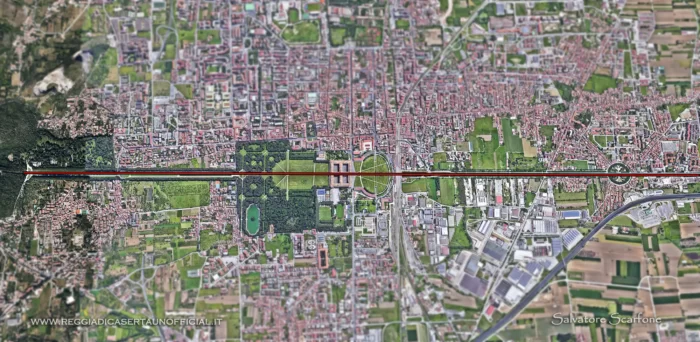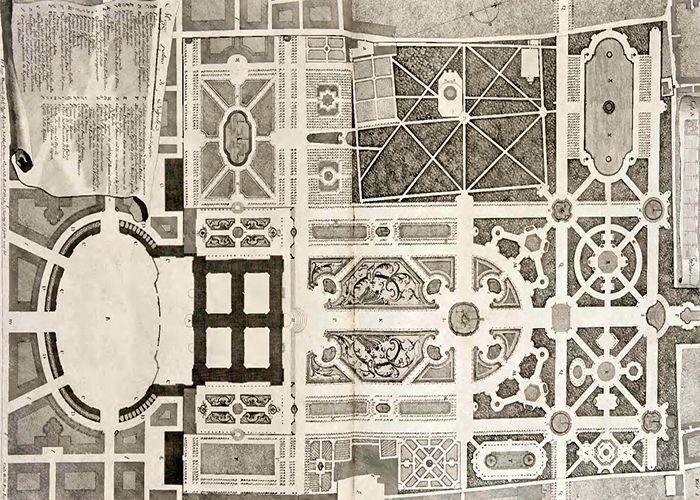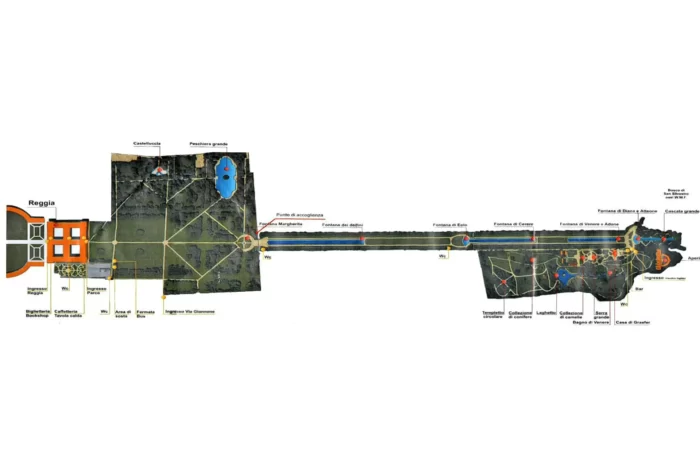The history of the Royal Park of Caserta
The synthesis of three centuries of landscape art in the Royal Palace at Caserta
The history of the Park
The history of the Park, designed by Luigi Vanvitelli and inspired by the gardens of the great royal palaces of the time, combines the tradition of the Italian Renaissance garden with the solutions introduced by André Le Nôtre for the gardens of Versailles.
You can feel its splendour and its size since after the entrance of the palace, when between the arches of the central gallery, you will notice the gardens extending as far as the eye can see. This is an innovation called “Telescope Effect” and was introduced by Vanvitelli, who designed an huge completely straight avenue starting from Naples and ending at the top of the waterfall situated at the ending part of the Garden of the Royal Palace of Caserta.
The “telescope effect” created by Vanvitelli
The Park covers an area of 120 hectares, with a length of for 3.3km. The water is supplied by the Carolino Aqueduct, which brings it to the pools, fountains and the palace.
The works started with the boundary of the area around the palace, and with the planting of the first plants, started in 1753, together with the construction of the Carolino Aqueduct.
This enormous 120ha garden is only a reduced version of the one that Luigi Vanvitelli had designed: at his death in 1773, the aqueduct was completed, but no fountain had yet been made. After 1773, when Vanvitelli passed away, the works stopped for 4 years.
The plan of the Park by the Declaration of drawings. Naples 1756.
In 1777 his son Carlo, now director of the works, showed to the new King Ferdinand IV a new project, a reduced version of his father’s design. Indeed, economic difficulties and the needs to complete the works quickly, forced the reduction of the number of fountains in the second part of the Park. However, Luigi Vanvitelli’s design was kept unchanged in the general shape, especially the most prominent thing of its project: the spectacular 3.3km canal of fountains and basins ending with the amazing waterfall.
In 1786, in the eastern part of the Park, started the construction the English Garden, the first example of informal garden in Italy. lt was desired by the queen Maria Carolina, wife to Ferdinand IV,and sister of Marie Antoinette, Queen of France. The English Garden is inspired to an ideal of spontaneous and wild nature, very differently from the rest of the Park based on the layout of the Italian formal gardens.
External Link





